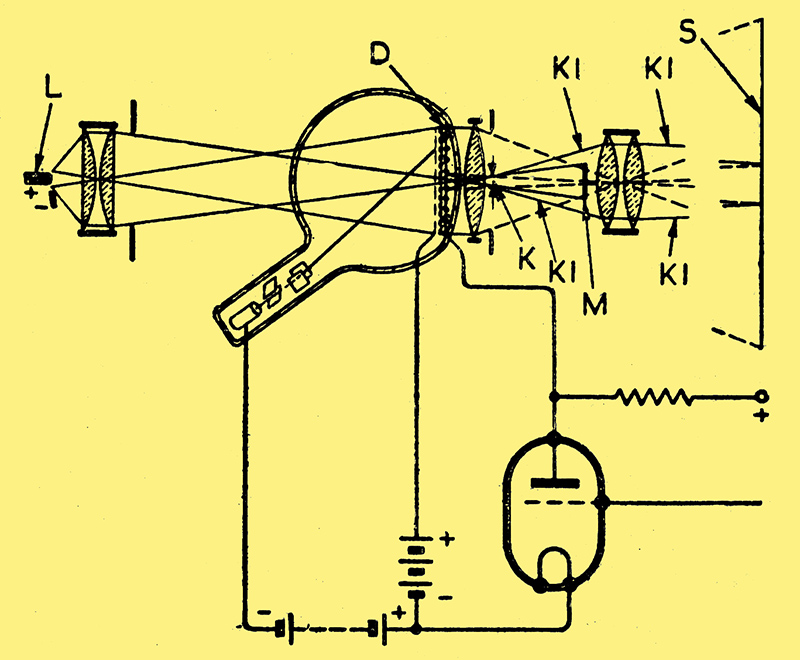|

Externally projected television pictures
Limitations of the fluorescent screen, both as regards size and brilliance, are avoided by a method of reproducing the picture, on an external screen, by direct projection through a sensitive diaphragm inside a cathode-ray tube from a source of light outside the tube.
The sensitive diaphragm D consists of a thin layer of oil and gum which, under the electrostatic changes produced by the scanning action of a modulated electron stream, is deformed into a series of small lenses.
Normally the layer is homogeneous, and light from an arc lamp L is focused on to a small mirror M which reflects it back again, so that none reaches the viewing screen S. The effect of the small lens as formed by the scanning action alters the focusing of the normal lens system and allows an image to be formed at the point K, and to be projected by the marginal rays K1 on to the viewing screen S. After each projection, the composition of the diaphragm D is restored to normal, either by some method of obturation or by a second electron stream which nullifies the prevailing static charges.
Ges. zür Forderung . . . Technischen Hochschule, Zurich. Convention date (Switzerland), 8th November, 1939. N0. 543-485.
|